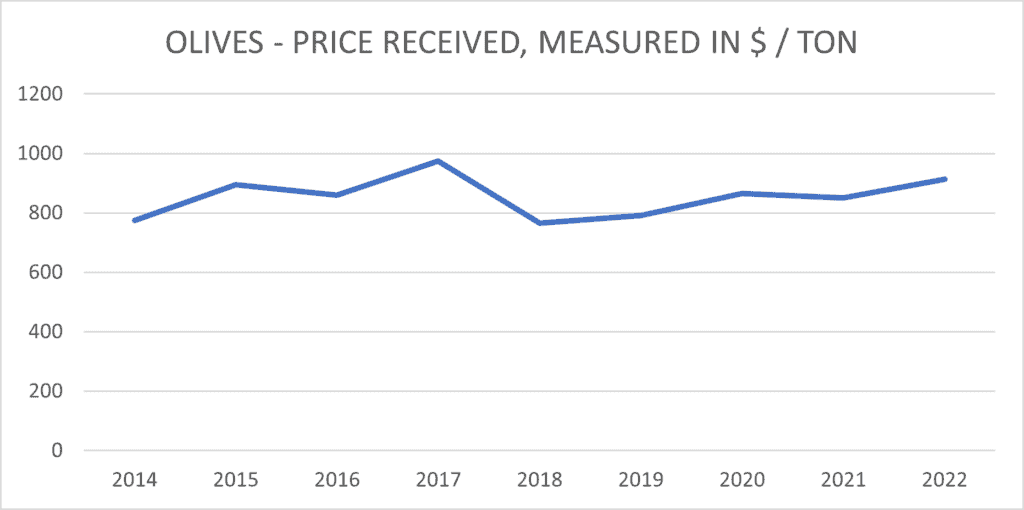In recent years, the olive oil market in the United States has experienced a significant increase in prices. Many factors have contributed to this surge, including supply and demand dynamics, climate change, and the global olive oil market. The rising cost of olive oil has had an impact on American consumers, as well as the agricultural industry and international trade. This article aims to explore the reasons behind the soaring prices of olive oil in the U.S., shedding light on the complexities of the market and its implications for various stakeholders. One of the primary reasons for the increase in olive oil prices is the growing demand. In recent years, consumers have become more health-conscious, leading to a greater demand for natural and healthier cooking alternatives. Olive oil, known for its numerous health benefits, has gained popularity among American consumers as a healthier substitute for traditional cooking oils. This increased demand has put pressure on the olive oil supply chain, leading to higher prices.

Source- USDA, Lending acres, Gofin Data Solutions Inc.
Olive oil prices have reached new records due to severe droughts in major producing countries, resulting in a significant drop in production. The average price in August was 130% higher than the previous year and showed no signs of easing. Spain, the world's largest producer and exporter of olive oil, has been hit hard by an intense drought for months and recently recorded its third hottest summer. According to Mintec, Spain's olive oil production has slumped to around 610,000 tons, a drop of more than 50% compared to the usual 1.3 to 1.5 million tons. The situation is complicated by concerns about reduced production in other major European olive oil-producing countries, including Italy and Greece, where drought conditions prevail. Greece and Italy are the second and third largest producers of olive oil, according to the International Olive Council. Prices of olive oil in Spain's Andalusia soared to €8.45 ($9.02) per kilogram in September, marking the highest price ever recorded for Spanish olive oil. This soaring price has led some to steal it, with reports of 50,000 liters of extra virgin olive oil being stolen in the early hours of August 30. Thieves also made off with 6,000 liters of extra virgin olive oil worth €50,000 from the Terraverne oil mill.
In addition to demand, climate change has had a significant impact on olive oil production worldwide, including in major olive oil-producing countries like Spain, Italy, and Greece. Extreme weather conditions, such as droughts and heatwaves, have negatively affected olive groves, leading to lower yields and reduced quality. As a result, the limited supply of olive oil has driven up prices in the global market, affecting the United States as an importer of this valuable commodity.
Moreover, geopolitical factors have played a role in the surge of olive oil prices. Political instability in major olive oil-producing countries, such as Syria and Tunisia, has disrupted production and hindered trade, leading to a decrease in supply. Additionally, trade tensions and tariffs imposed on certain exporting countries have further impacted the market, making olive oil imports more expensive for American consumers.
Furthermore, the cost of production and distribution, including labor, transportation, and packaging, has also contributed to the rising prices of olive oil. As the cost of living and wages continue to increase globally, these expenses will inevitably be passed on to consumers. Additionally, the transportation of olive oil from distant regions to the U.S. adds to the overall costs, further impacting the final retail price. The soaring prices of olive oil have implications for different stakeholders in the industry. Producers and farmers may benefit from higher prices, as they generate greater revenue for their crops. However, this can also create challenges for small-scale farmers who rely on a stable market and struggle to invest in their production capabilities. Consumers, on the other hand, may face increased expenses when purchasing olive oil, forcing them to reconsider their consumption habits or opt for cheaper alternatives.
In conclusion, the surge in olive oil prices in the USA can be attributed to various factors, including increased demand, climate change, geopolitical issues, and production costs. While the demand for healthier cooking alternatives has driven up prices, climate change and geopolitical factors have resulted in limited supply. The cost of production and distribution has further elevated the retail price of olive oil. As the situation continues to evolve, consumers, producers, and policymakers need to understand and adapt to these changes to ensure a sustainable olive oil market in the U.S.
